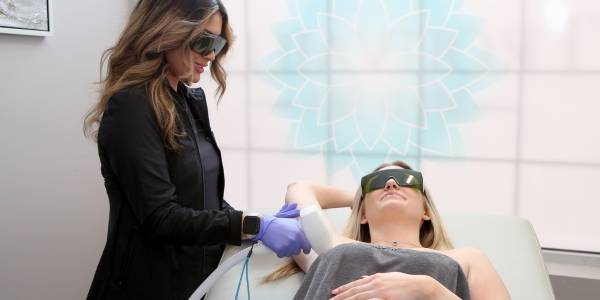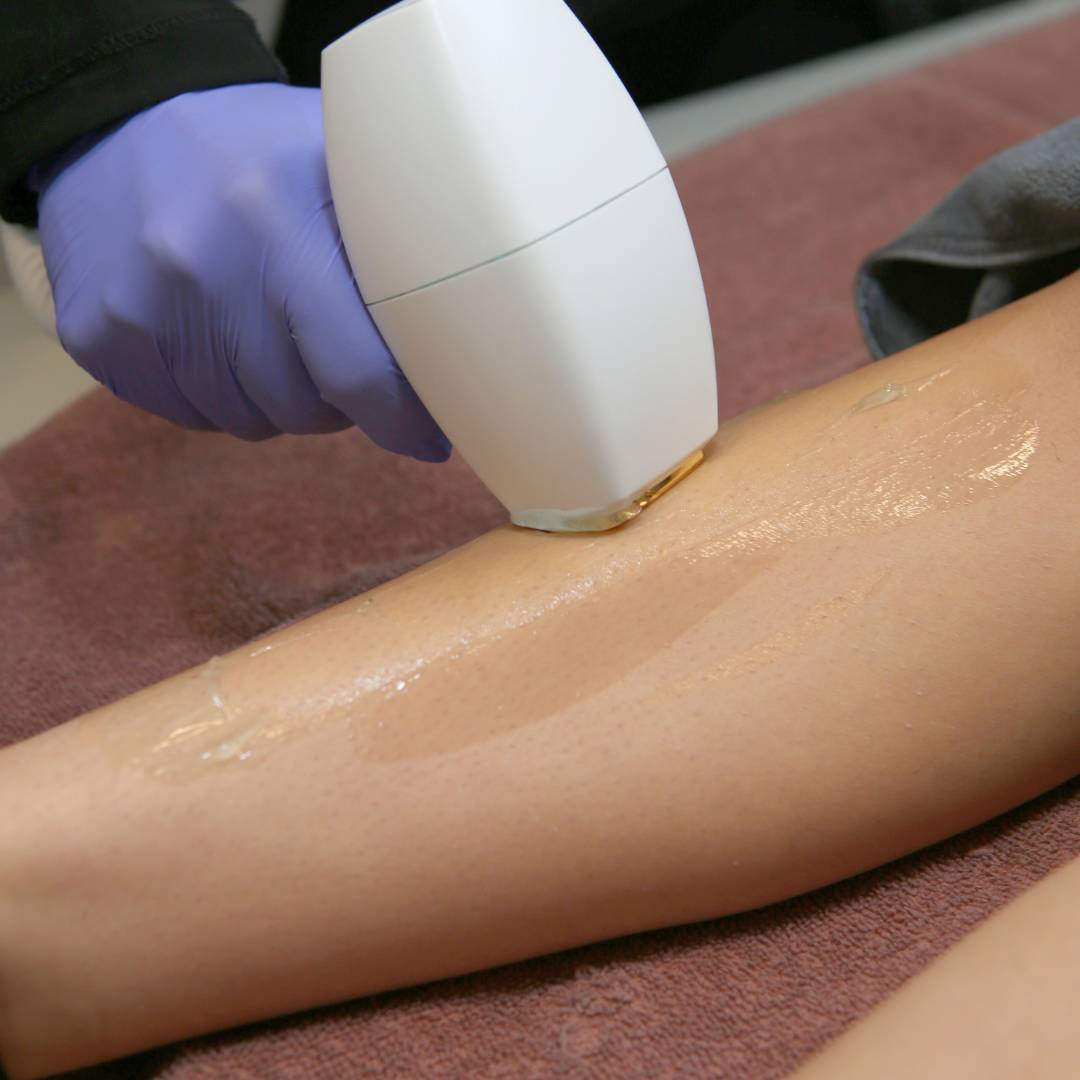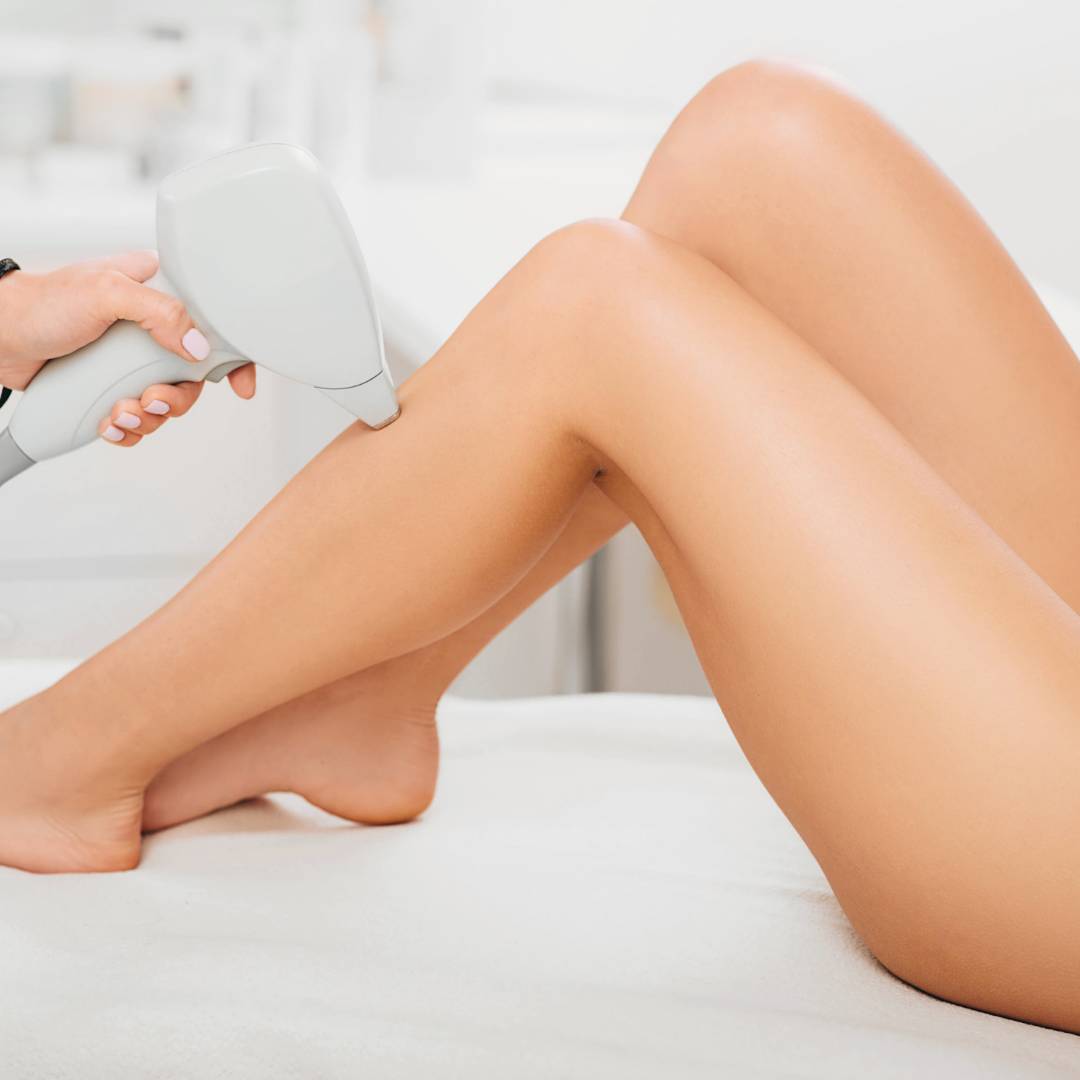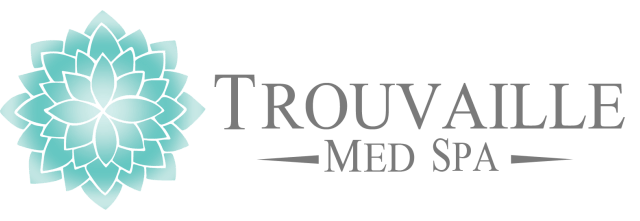Laser Hair Removal
Tinley Park
What is Laser Hair Removal?
Our Laser hair removal treatment in Tinley Park utilizes concentrated light beams to target and destroy hair follicles, reducing or eliminating unwanted body hair. For this procedure, a handheld device emits laser pulses, absorbed by hair pigment (melanin), causing follicle damage without harming surrounding skin. Over multiple sessions at Trouvaille Med Spa, damaged follicles lose their ability to produce new hair, ensuring long-term reduction. This precise and relatively discomfort-free method is commonly used on areas like the face, legs, underarms, and bikini line. Trouvaille Med Spa in Tinley Park utilizes InMode’s Triton Hair Removal laser, a cutting-edge solution that combines diode laser, radiofrequency, and Intense Pulsed Light (IPL) technologies. Triton’s versatility and comfort-enhancing features, such as a sapphire cooling tip, make it a reliable and effective choice for achieving smooth, hair-free skin.

What to Expect from a Laser Hair Removal Treatment?
During your initial consultation at our Tinley Park location, one of our highly skilled Laser Technicians will discuss the areas of concern and how many treatments you will need per area. Laser treatments at Trouvaille Med Spa are quick and effective so you may go about your regular day afterwards.

Laser Hair Removal Benefits
Safe for All Skin Types
Quick Treatment
FDA Approved
Hair-FREE
No More Razor Bumps
Time Saver
Before & After Laser Hair Removal Photos
FAQs For Our Laser Hair Removal Treatment In Tinley Park
4 weeks before – Do not wax, tweeze, bleach, or use hair removal creams or electrolysis on treatment area. These activities can reduce the effectiveness of the treatment. Avoid direct sun exposure. If unavoidable, use minimum SPF 30.
1-2 weeks before – Discontinue tanning (includes bed, self-tanning creams and sprays)
24 hours before – Shave treatment area
Day of treatment – Remove any lotions, make-up and deodorants prior to treatment
Wear loose fitting clothing that will leave the treatment area exposed and easily accessible for treatment. Tight or rough clothing may cause you to feel uncomfortable if the skin becomes sensitive after treatment
You may feel a slight pricking or stinging. Some people compare the feeling to a rubber band snapping onto the skin. We try our best to make the process as tolerable as possible.
Triton Hair Removal by InMode is an innovative aesthetic treatment, employing advanced technology for efficient hair removal across diverse skin types. The system integrates diode laser, radiofrequency, and Intense Pulsed Light (IPL) technologies to achieve optimal results with minimal discomfort. Triton’s unique combination precisely targets hair follicles, ensuring enduring hair reduction. Featuring a sapphire cooling tip for enhanced patient comfort, the device is customizable and addresses various skin concerns, making Triton a reliable and effective choice for modern, comprehensive hair removal solutions.
8-10 Treatments are usually required for optimal results. We recommend coming every 4-6 weeks for treatment.
Laser hair removal is permanent hair reduction, not permanent hair removal. At Trouvaille Med Spa, it’s not uncommon for patients to require maintenance treatments once a year, even after the area has been fully treated. The reason: The laser targets and destroys your current hair follicles, but new follicles can develop thanks to hormonal changes or shifts in weight.
Laser hair removal doesn’t change the color or texture of your hair. It targets hair follicles to reduce hair growth over time.
Laser hair removal primarily targets hair follicles and is not specifically designed to treat excessive sweating. However, reducing hair in certain areas may indirectly help manage sweat production.
Laser hair removal can be challenging on areas with tattoos because the laser targets pigment in the hair follicles, which can also be absorbed by tattoo ink, potentially causing damage to the tattoo or skin.
It’s best to avoid laser hair removal on tanned or sunburned skin to reduce the risk of skin damage. Wait until your skin returns to its normal color.
It’s generally recommended to avoid laser hair removal during pregnancy and breastfeeding due to potential risks. Consult with your healthcare provider and laser specialist for guidance.
Shaving is typically allowed between sessions, but avoid other hair removal methods like waxing or plucking that can disrupt the hair follicles targeted by laser treatment.
Laser hair removal can cause some discomfort, but the pain level can vary depending on individual pain tolerance, the area being treated, and the type of laser used. Some areas with thicker skin may hurt less than more sensitive areas. Many people find it less painful than waxing, and topical anesthetics can be used to minimize discomfort.
Typically, 6 to 8 laser hair removal sessions are needed for the bikini area. Treatments are spaced about 6 to 8 weeks apart to effectively target hair in different growth stages. The exact number of sessions can vary based on individual hair growth patterns and skin type.
It is generally advised to avoid intense workouts for at least 24 hours after laser hair removal. Physical activity can increase body temperature and sweating, potentially leading to irritation and complications in the treated area.
It’s advisable to wait at least 24 hours before engaging in sexual activity after laser hair removal, especially if the treatment was done in sensitive areas like the bikini line. This waiting period helps reduce the risk of irritation and infection.
Essential Laser Hair Removal Insights

Choosing the Right Candidate: Who’s Suitable for Laser Hair Removal Treatments?
Laser hair removal, a popular cosmetic procedure wherein concentrated beams of light target melanin in hair follicles, heating and destroying them without damaging surrounding skin.

The Truth About Laser Hair Removal with Trouvaille
Laser hair removal works by directing concentrated laser energy at unwanted hair, which is absorbed by the melanin in the hair follicles. Compared to shaving,

Laser Hair Removal Aftercare Tips for Silky Smooth Skin
Laser hair removal, a popular method for achieving lasting hair reduction, utilizes concentrated light beams to target and damage hair follicles through selective photothermolysis. By
